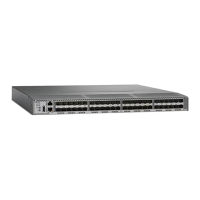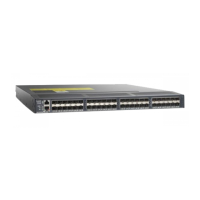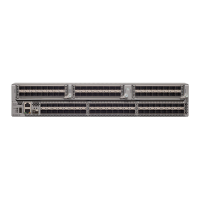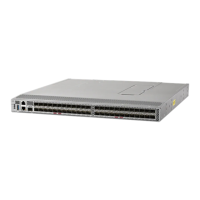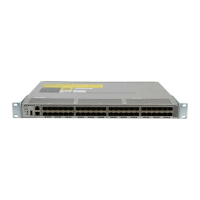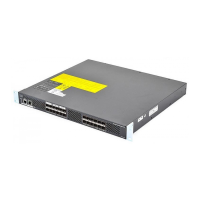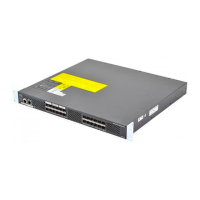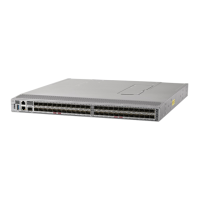If any NL port attached to an FL port shares a broadcast zone with the source of the broadcast frame, then the
frames are broadcast to all devices in the loop.
Tip
To broadcast frames in the enhanced zoning mode, follow these steps:
Step 1 switch# configure terminal
Enters configuration mode.
Step 2 switch(config)# zone-attribute-group name BroadcastAttr vsan 2
Configures the zone attribute group for the required VSAN.
Step 3 switch(config)# no zone-attribute-group name BroadAttr vsan 1
Removes the zone attribute group for the required VSAN.
Step 4 switch(config-attribute-group)# broadcast
Creates a broadcast attribute for this group and exits this submode.
Step 5 switch(config-attribute-group)# no broadcast
Removes broadcast attribute for this group and exits this submode.
Step 6 switch(config)# zone name BroadcastAttr vsan 2
Configures a zone named BroadcastAttr in VSAN 2.
Step 7 switch(config-zone)# member pwwn 21:00:00:e0:8b:0b:66:56
Adds the specified members to this zone and exits this submode.
Step 8 switch(config)# zone commit vsan 1
Applies the changes to the enhanced zone configuration and exits this submode.
Step 9 switch# show zone vsan 1
Displays the broadcast configuration
Configuring System Default Zoning Settings
You can configure default settings for default zone policies, full zone distribution, and generic service
permissions for new VSANs on the switch. To configure switch-wide default settings, follow these steps:
Step 1 switch# configure terminal
Enters configuration mode.
Step 2 switch(config)# system default zone default-zone permit
Cisco MDS 9000 Series Fabric Configuration Guide, Release 8.x
130
Configuring and Managing Zones
Configuring System Default Zoning Settings
